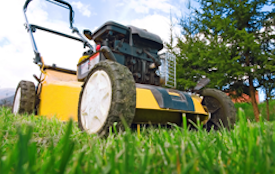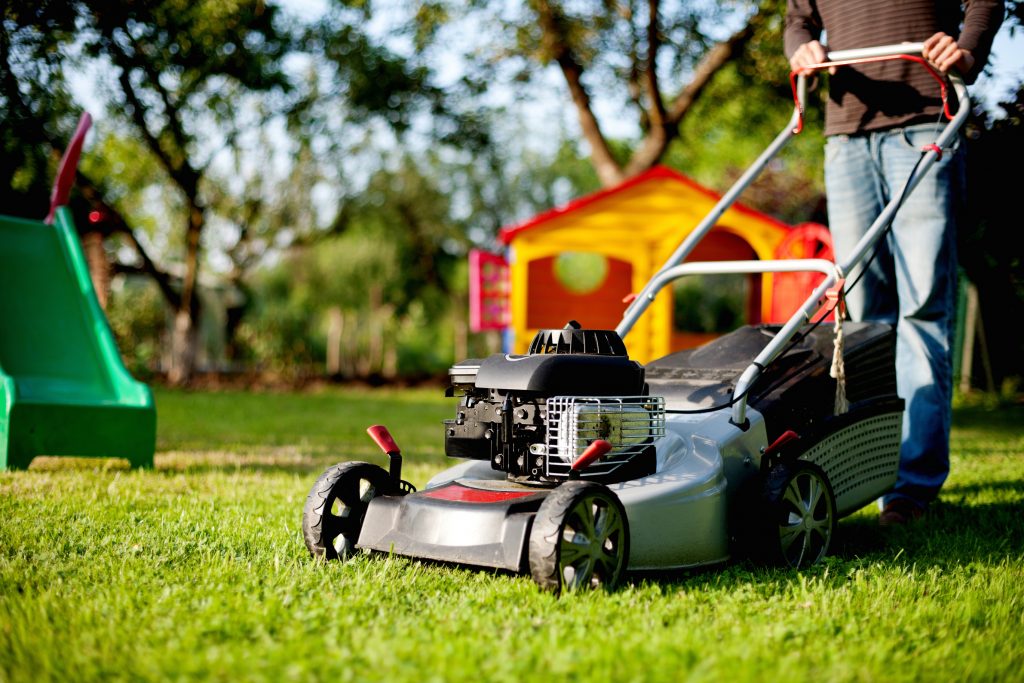Can a Lawn Mower Spread Fungus?
A beautiful green lawn is a natural invitation to relax, play and spend time outdoors. However, ensuring your lawn stays healthy requires effort and a lawn care routine, ...

Buffalo grass is a major concern when it becomes overgrown.
If the Buffalo grass is not managed or mowed properly when it is in an overgrown state, there is a high risk of it either dying in places or dying altogether from severe lawn mowing practices.
Therefore, great care must be taken when mowing an overgrown Buffalo lawn.
 Buffalo grass breeds like Sapphire, Palmetto & Prestige are warm-season grass types, and while most warm-season grasses have both Rhizomes (below ground runners) and Stolons (above ground runners), Buffalo grass is quite unique in that it only has Stolons.
Buffalo grass breeds like Sapphire, Palmetto & Prestige are warm-season grass types, and while most warm-season grasses have both Rhizomes (below ground runners) and Stolons (above ground runners), Buffalo grass is quite unique in that it only has Stolons.
When grasses grow higher, their crowns are also raised higher, and crowns are the life-centre of all plants, including our lawns. To remove the crown of any plant, will mean the death of that plant, including our lawns – unless it has an underground source of crowns to regenerate from.
Other lawn types such as Couch, Zoysia or Kikuyu can be mowed severely, have their above-ground crowns removed, die in affected areas and still recover due to the below-ground runners (rhizomes).
However, a Buffalo lawn cannot do this, it has no rhizomes to recover from.
If a Buffalo lawn has its crowns removed, it will die in the affected areas, and will need to recover from surrounding healthy areas of lawn, which will spread into the dead areas of turf.
And that’s why Buffalo grass is such a problem to vertimow / de-thatch, and other lawn types are not.
The only way to safely reduce the height of Buffalo grass is to do it over time, and over many lawn mowings.
This way, the Buffalo grass will re-train it’s crowns to grow at a lower height, and the lawn will not die.
When a Buffalo lawn is being re-trained to grow at a lower height – expect some small areas of turf to die away, this cannot be helped. However, if we’re careful these instances should be greatly reduced and easily recovered from.

Begin the first lawn mowing at a very high height. It will not look like a masterpiece after cutting, but it’s a start on our road to recovery and the lawn will not die.
Frequent lawn mowing is very important at this time, if the lawn is left too long between cuts, the crowns will simply raise higher again, and the lawn will be scalped and possibly die if the height is reduced at the next cut.
In the summertime, and if the lawn is in good health, reduce the lawn mowing height one notch at a time every two weeks. If mowing every week (recommended), keep the same height over two mowings.
This lawn repair is most effective during the active growing season when the weather is warm.
Over subsequent lawn mowings, slowly reduce the lawn mowing height one notch at a time on the mower. The key is to take it nice and easy, and do things slowly.
The crowns of the Buffalo lawn will re-train themselves to now grow at a lower height.
To finish the re-training process of the lawn crowns, simply continue lawn mowing at regular intervals, and the lawn will eventually fully recover and look green and lush once again.
Any areas of Buffalo turf which did die in the process should have recovered by this time. If you have excess thatch in the lawn at this time, then this too can be repaired.
Ensure the weather is still warm and not entering into winter. Repeat the same process as above, slowly lowering the lawn mowing heights over time.
Once the Buffalo thatch has been reduced and the lawn is still green and healthy, it’s time to increase mowing heights to optimum lawn mowing heights for Buffalo grass.
Optimum heights for Buffalo grass are between 35-65 mm.
For more fast facts and Q&As on our Buffalo varieties –
Or check out our handy Quick Lawn Selection Guide
.